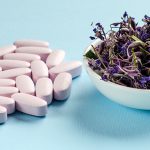
United States Outperformed United Kingdom in the Professional Nail Care Market
COVID-19 pandemic measures massively disrupted the ability of U.S. and U.K. nail salons to perform services, but new research by Kline finds that the United Kingdom took a much bigger hit. According to Kline, the United Kingdom experienced a decline of 60% in 2020, while the United States decreased by 30%. From March to May, both markets faced lockdowns; however, subsequent lockdowns were imposed in the United Kingdom throughout the rest of the year, and this









